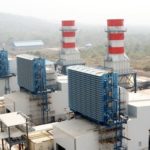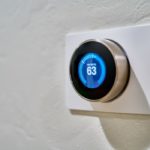Load shedding. It’s been a plague for South Africans since 2007. And in 2019 reduced the country’s GDP growth by 0.30%, which translates to roughly R8.5 billion of real GDP (+$485 million).
But even though it has a catastrophic effect on the national economy and is the number one challenge that small business owners face, many locals and certainly foreigners still don’t know what the hell load shedding really is.
So let’s get down to it and answer one of the biggest questions hovering around South Africa.
Table of Contents
What exactly is load shedding?
Load shedding is a measure of last resort taken by Eskom (South Africa’s largest producer of electricity) when power demand begins to exceed possible supply.
To avoid a nationwide blackout and total collapse of the power grid, Eskom rations the available supply between different districts according to a published schedule.
Basically, where you live dictates what time of day you’ll have electricity or be without.
Here’s an infographic for some visual interpretation.

Eskom’s load shedding timeline
Our Eskom load shedding timeline should shed some light as to why the country is still dealing with blackouts.
What are the different load shedding stages?
As of 2020, there are a total of 8 stages. The higher the loadshedding stage, the more frequently you’ll experience electricity cuts.
How does it work?
The stage is determined by Eskom and depends on the number of megawatts needed to balance the power grid.
Once a schedule has been agreed upon, Eskom and the municipalities implement the loadshedding plan on a rotational basis.
Loadshedding will then commence for 2 – 4 hours at a time, depending on the stage and also on your area. For example, in stage 8 power will be turned off throughout the day for a total of 12 hours.
How South Africa generates electricity
Eskom accounts for 95% of all the electricity generated in South Africa. The country produces approximately 52 811 Mega Watt (MW).
Below, you can see how this energy is produced.
For comparison, we have listed the total MW-generating capacities of other countries around the world. Remember, South Africa has a generating capacity of 52,811 MW.
- USA: 1 200 000 MW
- France: 67 527 MW
- Germany: 211 000 MW
- Australia: 49 365 MW
- India: 372 000 MW
Map of power stations in South Africa

How can you save electricity?
Low monthly expenses is something we all want, right?
Of course it is, who doesn’t!
Sadly though, eco-friendly behavior is usually associated with high costs.
But what if you could keep costs low and protect your environment at the same time? (Yes you read correctly, it’s your environment). – Too good to be true, right?
Wrong! In fact, there are many ways YOU can help our planet by reducing your very own carbon footprint.
I have listed some life hacks that will help you along this path.
Which one of your appliances use the most electricity?

In case you’re not quite sure what a kWh means, don’t stress. Check out this short video below.
Cost of getting off the Eskom energy grid?
Niche Market wrote an extremely informative article over here. We recommend you to read it if you are serious about getting off the Eskom energy grid. Costs would look like this:
| Solis Grid-Tie PV System (1-phase) | Panel Array | Monthly savings (R1,85/kWh) | System Cash price | Monthly loan @ 19%, 60 months |
|---|---|---|---|---|
| 3kW Solis System | 3kW | R832 (450kWh) | R 53 910.00 | R1498 |
| 4kW Solis System | 4kW | R1220 (660kWh) | R 63 100.00 | R1736 |
| 5kW Solis System | 5kW | R1465 (792kWh) | R 82 500.00 | R2240 |
A solar power system is certainly a pricey investment on your part. The technology is still in its formative stages and will continue to get better/cheaper as time progresses.
Perhaps, you’d like to start slow and add solar power incrementally to your home. Basic panels and installation can start anywhere from R2000 to R50 000.
Unfortunately, not all of us have the space nor the money to install solar panels throughout our household. However, as you’ve seen in this article, there are many ways you can save on your electricity bills and reduce your carbon footprint at the same time, all costing a total of $0!






















faith
Thursday 8th of October 2020
nice information it really helped me with my research
Kyle
Thursday 8th of October 2020
Hi Faith, you are more than welcome, glad you found the information useful. :)